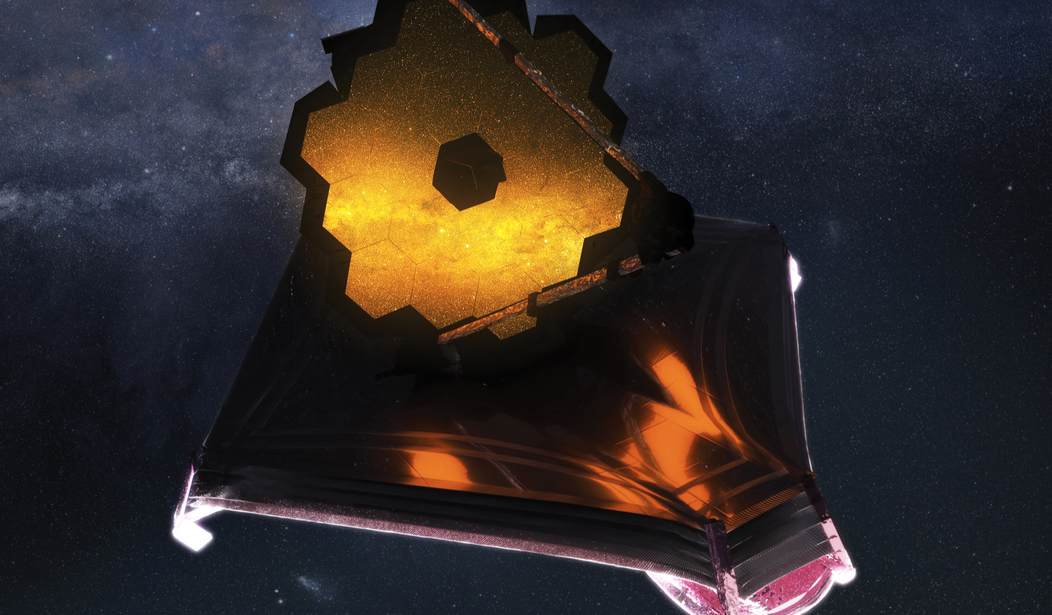Years ago in another career I was a producer for the Hubble Space Telescope.
In those years we were already getting ready for the exploration machine’s successor, then called the Next Generation Space Telescope. Everybody on the team had a thing for Star Trek. I even did some early production work for the telescope, which was just vaporware at the time. It was plans, discussions, proposals, and animations, nothing more. Now it’s real.
It’s amazing now to see that after all these years, the James Webb is ready to go. The Guardian reports that the massive, complex scope has completed and passed its final pre-launch tests.
NASA tells us what’s next.
Now that observatory testing has concluded, shipment operations have begun. This includes all the necessary steps to prepare Webb for a safe journey through the Panama Canal to its launch location in Kourou, French Guiana, on the northeastern coast of South America. Since no more large-scale testing is required, Webb’s clean room technicians have shifted their focus from demonstrating it can survive the harsh conditions of launch and work in orbit, to making sure it will safely arrive at the launch pad. Webb’s contamination control technicians, transport engineers, and logistics task forces are all expertly prepared to handle the unique task of getting Webb to the launch site. Shipping preparations will be completed in September.
So many things can still go wrong. It’s currently slated to launch in November or December.
I have friends who have worked on the JWST project all these years. One of them has been traveling back and forth to French Guiana over the past few months for launch preparations.
When it reaches its observation post, it will be about a million miles from the earth — three times the distance to the moon. Humans have obviously never been that far into space, and if anything goes wrong we will not be able to send astronauts to repair it as we have done many times with Hubble. Hubble was designed to be upgraded and repaired in space, one of many reasons it was placed in low-earth orbit about 330 miles up. When the spherical aberration was found in Hubble’s main mirror, it was a true crisis but everyone on the project was aware that a fix was likely. The best engineers were on the task, and whatever they came up with could be implemented by NASA astronauts aboard a space shuttle. Hubble was the one program that united human spaceflight and deep space exploration, via its service capacity.
Hubble has outlived its 10-year mission by decades, but it will eventually fail. Its orbit will decay and it will fall through the atmosphere and back to earth.
Related: Hubble, the ‘Telescope With Nine Lives,’ is Back for More Revelations
The Webb will be entirely different. It’s almost terrifyingly complex. It will sit out at L2, an unstable Lagrange point that will keep it a fixed distance from us but in orbit contact with our planet. It’s perfect for JWST’s mission.
L2 is ideal for astronomy because a spacecraft is close enough to readily communicate with Earth, can keep Sun, Earth and Moon behind the spacecraft for solar power and (with appropriate shielding) provides a clear view of deep space for our telescopes.
The distance itself prohibits servicing.
The telescope itself will launch with its main mirror folded up around its body sort of like a bat’s wings. They will slowly unfold and the body will unfurl once the telescope has reached its destination and undergone flight checks. If anything goes wrong during that unfolding, it could spell doom for the mission. The mirror itself is delicate, composed of hexagonal sections that will be exposed to space. The body is even more delicate.
It’s a safe bet the telescope will unfold properly and begin work as designed. Once it does, the James Webb will pick up where Hubble and the Spitzer Space Telescope leave off. It’s placed so far from earth to avoid the heat the planet radiates, allowing it to see more clearly than any previous telescope in the infrared part of the light spectrum. This will enable it to see maybe as far back as 100 million years since the beginning of the universe. Even Hubble cannot see that far back.
The James Webb probably won’t be the compelling pretty-picture machine that Hubble is. Hubble sees different parts of the spectrum including visible light, which is where the bulk of its most majestic images come from. The famous Eagle Nebula “Pillars of Creation,” fiery active galaxy Centaurus A, the eerie Helix Nebula, and most of Hubble’s other iconic images are visible-light observations. But infrared is where the deepest exploration can be done, seeing through clouds of gas and dust and far back to the beginning of time. Or pretty close.
Infrared is what the James Webb Telescope will see, and that will let it go where no telescope has gone before.
This confirmed Hubble-hugger is very much looking forward to JWST’s career.









